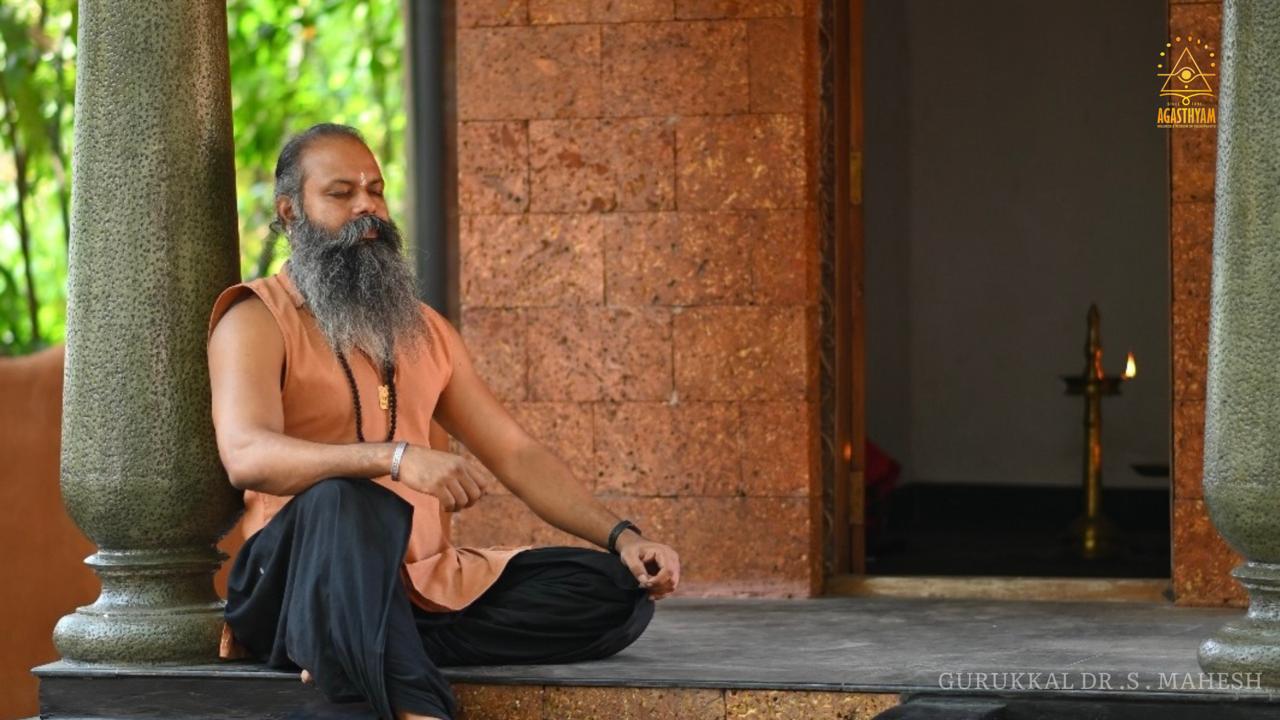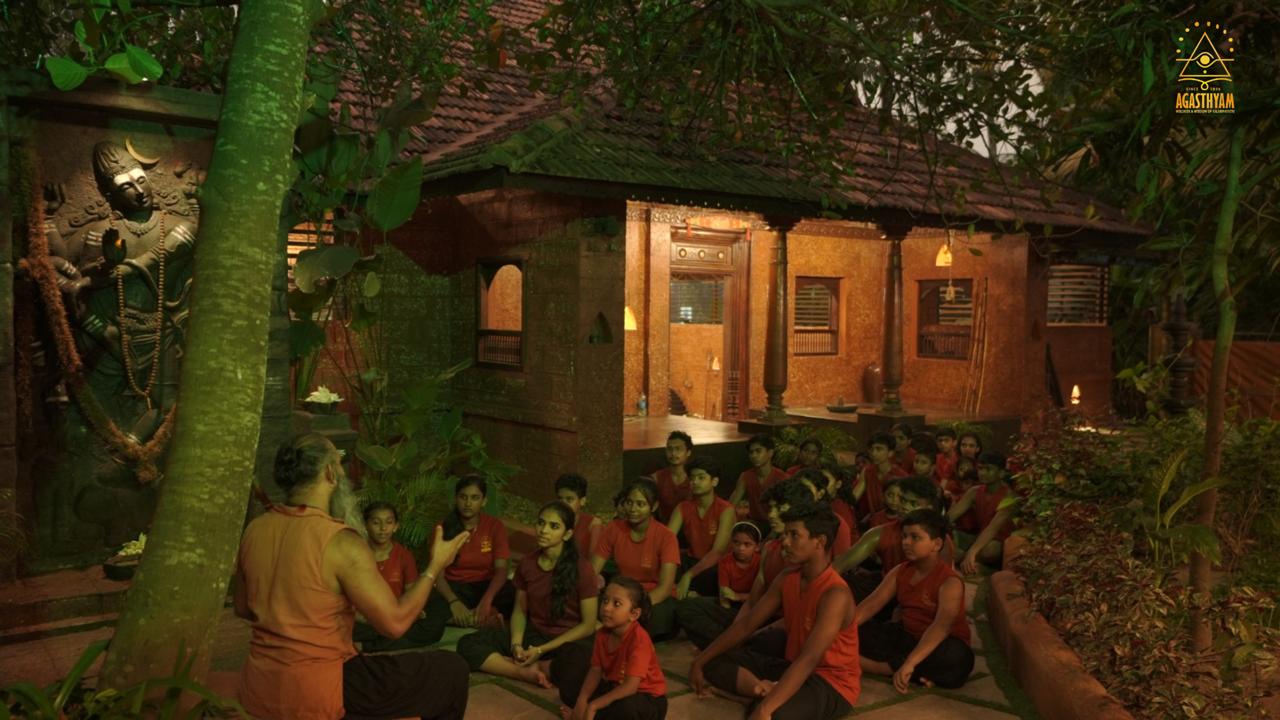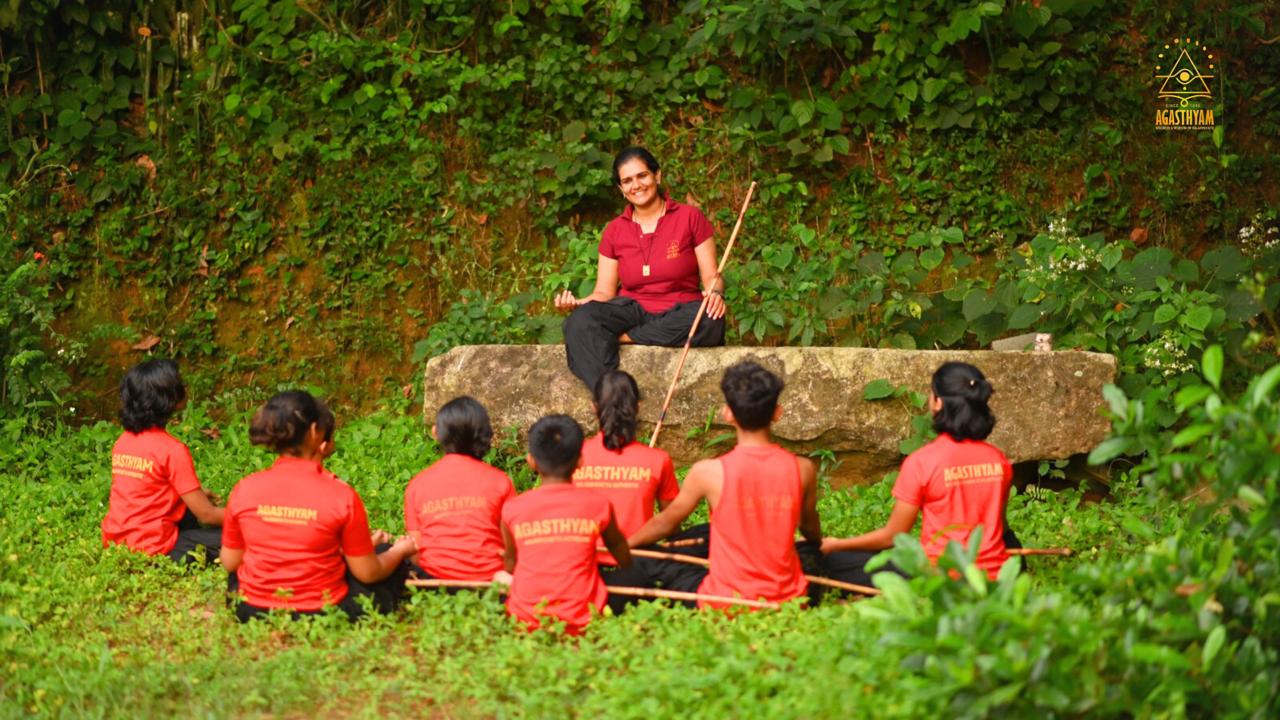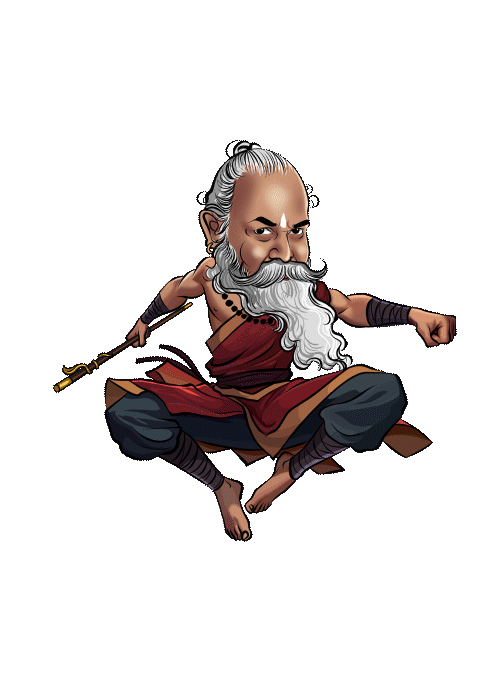
- kalari
- Uncategorized
In ancient times, the gurukulam system of education was not just away to acquire knowledge—it was a way of life. Education wasn’t confined to books or classrooms but was deeply rooted in the relationship between the Guru and the student, the shishya. Back then, the responsibility of learning rested entirely on the Guru.
The Guru was not just a teacher but a mentor, guide, and even a parent to the student. The Guru would observe, understand, and nurture each student based on their unique potential. But today, the situation is reversed. In modern education, the responsibility of learning has shifted heavily onto the student. We measure progress through grades and exams, and teachers often play the role of facilitators rather than mentors.
Let’s look at some defining aspects of the gurukulam system and how they contrast with today’s educational practices.

Kaksha Nirapeksha – No Classrooms
In the old gurukulam system, there were no classrooms. Learning happened everywhere—in the forest, at the riverbank, or even while doing daily chores. The entire world was a classroom. Today, education is confined to four walls, with students expected to sit at desks, following rigid syllabi. But think about it—can the walls of a classroom capture the vastness of life?
Samaya Nirapeksha – No Fixed Time
In the gurukulam, there was no concept of fixed periods or timetables. Learning was spontaneous and happened whenever the Guru decided. Whether it was dawn or midnight, students had to be ready to receive knowledge.Compare this with today. We follow a strict timetable—science at 9 AM, math at 10 AM, and so on. But life doesn’t work like that. Problems and opportunities don’t arrive on schedule. The gurukulam prepared students for life by making them adaptable, alert, and open to learning at all times.
Kalaripayattu is not merely a physical practice; it’s a journey of self-discovery,
where the body becomes a vessel for the soul’s expression.
– Dr. S. Mahesh Gurukkal
Pareeksha Nirapeksha – No Exams
Here’s something remarkable—there were no formal exams in the Gurukulam! The Guru continuously assessed students by observing how they applied what they learned in daily life. If a student failed to perform, the Guru didn’t hand out marks or punishments but guided them more carefully. Today, exams dominate our education system. Students study to pass, not to understand.

Responsibility of the Guru
One of the biggest differences between then and now is the responsibility of the Guru. In the old system, the Guru took complete responsibility for the student’s growth—intellectual, physical, emotional, and spiritual. The Guru was a parent, teacher, and role model all rolled into one. Now, the responsibility lies largely with the student. Teachers deliver lessons, but students are expected to manage their own learning. This independence can be empowering, but without guidance, many
students feel lost. The Gurukulam was built on the Guru-shishya bond—a relationship of trust, discipline, and respect. Students lived with the Guru, absorbing not just knowledge but values, character, and life skills.




